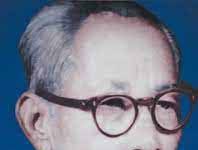Louis XVI | Brief Biography
Louis XVI
Louis XVI (23 August 1754 – 21 January 1793) was the last King of France before the fall of the monarchy during the French Revolution. He was born at the Palace of Versailles to King Louis XV and Queen Maria Leszczynska. He was married to Marie Antoinette and was known for his indecision and poor leadership during a time of great political and social turmoil in France.
Early Life:
Louis was the third son of King Louis XV and was not initially expected to become king. He received a traditional education and was taught by tutors who emphasized his royal duties. At the age of 15, Louis became the Dauphin of France upon the death of his elder brother.
Marriage:
In 1770, Louis married Marie Antoinette, the daughter of the Holy Roman Emperor, in a political marriage arranged to strengthen ties between France and Austria. The couple had four children, but their marriage was unhappy and they were criticized for their lavish spending and their alleged political insensitivity.
Accession to the Throne:
In 1774, Louis XV died and Louis XVI became king at the age of 20. He inherited a kingdom facing financial and political difficulties, including wars, a declining economy, and widespread social unrest.
Reign:
Louis XVI is often criticized for his indecision and poor leadership during his reign. He surrounded himself with advisors who were unable to provide effective solutions to France’s problems, and he was unable to take decisive action. In 1789, the French Revolution began and Louis was unable to effectively respond to the demands of the people for political and social change.
The French Revolution:
The French Revolution was a period of great political and social upheaval in France, characterized by the fall of the monarchy, the establishment of the First French Republic, and the rise of Napoleon Bonaparte. During this time, Louis was seen as a symbol of the outdated feudal system and was blamed for France’s problems. He was eventually arrested and put on trial for treason, and in 1793, he was executed by guillotine.
Legacy:
Louis XVI is remembered as a weak and indecisive leader who was unable to respond effectively to the challenges of his reign. However, his reign marked a turning point in French history and was a significant factor in the French Revolution. 0 0 0.
Sources:
“The French Revolution.” Encyclopædia Britannica, Encyclopædia Britannica, Inc., www.britannica.com/event/French-Revolution.
“Louis XVI.” Encyclopædia Britannica, Encyclopædia Britannica, Inc., www.britannica.com/biography/Louis-XVI.
“Louis XVI.” The History Channel website, www.history.com/topics/french-revolution/louis-xvi.
“Marie Antoinette.” Encyclopædia Britannica, Encyclopædia Britannica, Inc., www.britannica.com/biography/Marie-Antoinette.
“The French Revolution.” History.com, A&E Television Networks, www.history.com/topics/french-revolution. ***.
N.B. The article originally belongs to the book ‘Brief Biographies of Eminent Monarchs‘ by Menonim Menonimus.
Books of Biography by M. Menonimus:
- The World Writers-Brief Biographies
- Introduction to World Writers
- Introduction to World Personalities
- Love of Reputed Persons
- Brief Biographies of Ancient Thinkers and Writers..
Additional Searches:











